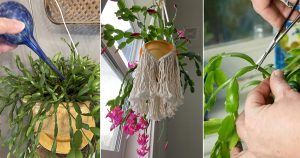We know you love your Sedum! So here are the best ways to make Burro’s Tail look bushier and trail better with some easy tips.
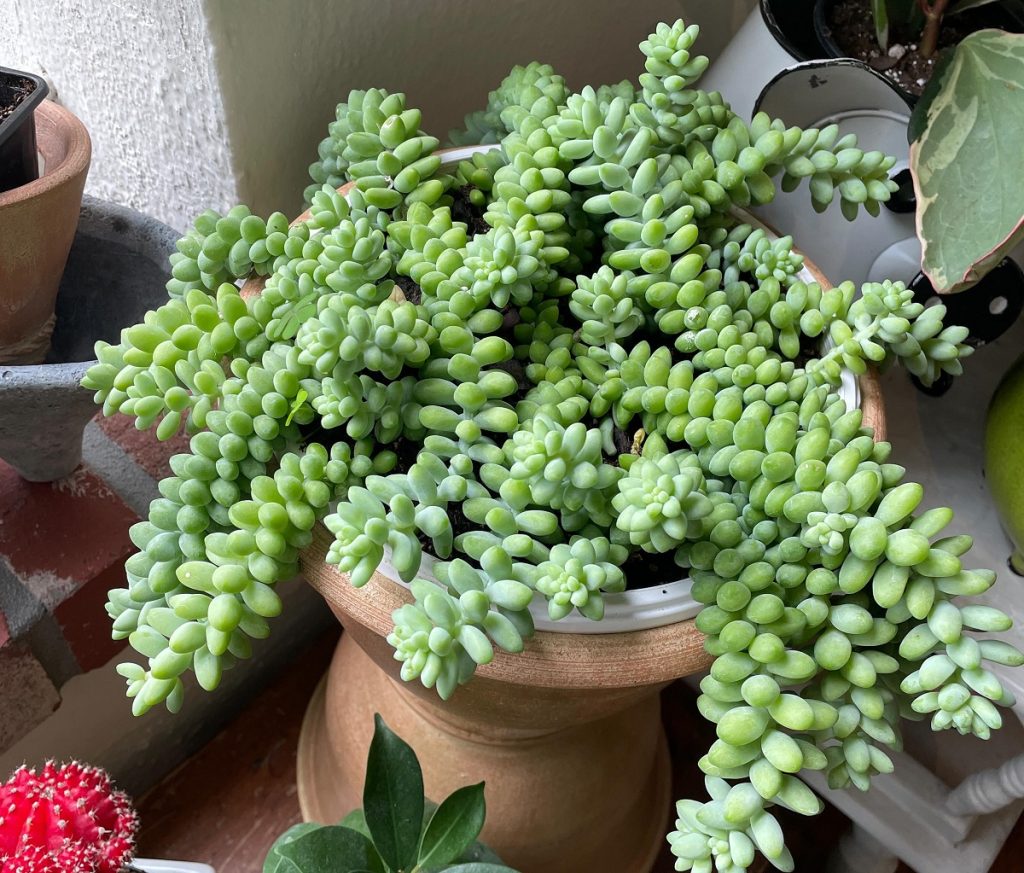
Succulents come in all shapes and forms, and a super interesting one is the Sedum morganianum. Also called the Donkey tail plant, the Burro’s tail has a fascinating appearance, perfect for hanging planters. If you are looking for ways to make your Burro’s tail bushier and trail better, this article is for you.
Ways to Make Burro’s Tail Look Bushier and Trail Better
1. Give It Full Sun
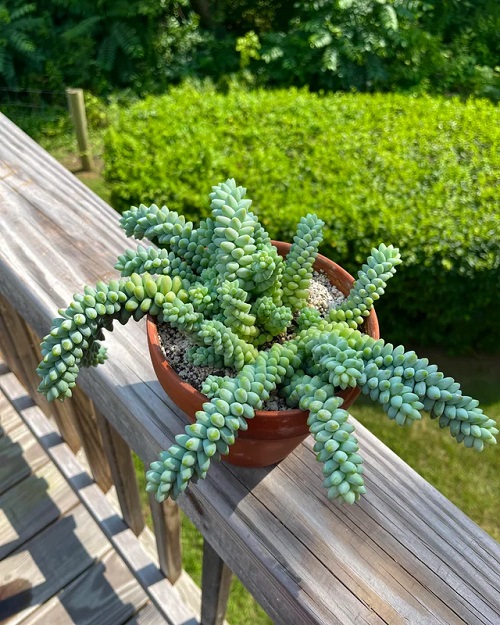
Hailing from sunny southern Mexico, the Burro’s tail is used to bright, direct sunlight all year round. When growing indoors, you must replicate such conditions if you dream of a gorgeous, full, trailing succulent. Place your plant near a south-facing window and let it soak up around 8 hours of glorious sunlight every day!
Note: If your area receives intense afternoon sun, move your plant near an east-facing window instead. That way, it’ll enjoy the gentle morning rays while staying protected from the harsh afternoon heat.
2. Water Infrequently but Thoroughly
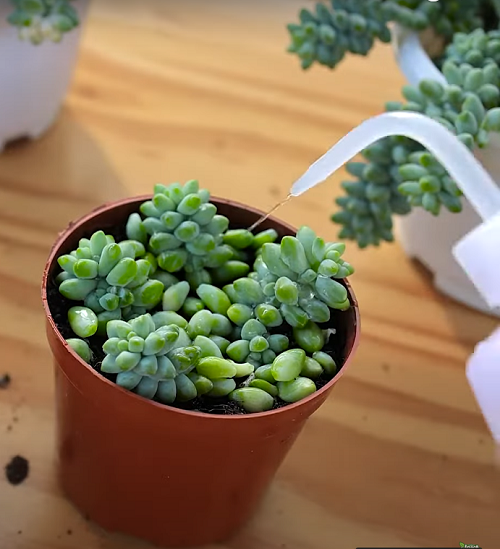
Like most succulents, Burro’s tail doesn’t need much water. But here’s the twist—even though you might water it every 10 to 14 days, make sure to give it a good, deep soak. Of course, well-draining soil is essential so that any extra water drains out easily, keeping root rot at bay.
During winter, cut back on watering—about half as often. Always use room-temperature water and water only when the soil feels completely dry.
3. Cactus Soil Mix is Best
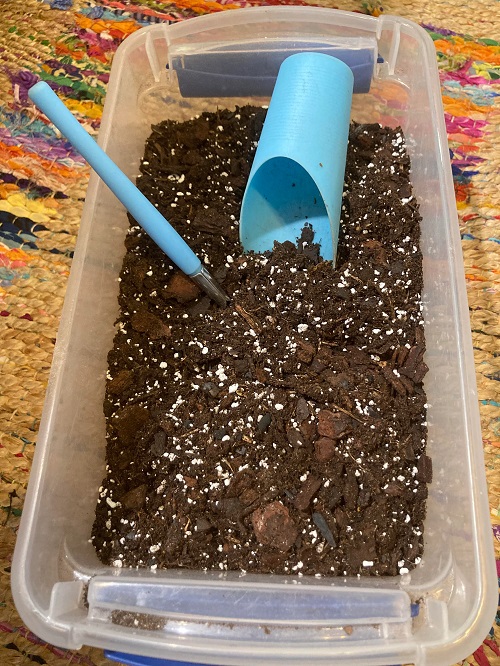
When it comes to drainage, cactus soil mix is the clear winner for Burro’s tail. You can easily go with a store-bought succulent mix, but if you’re into a bit of DIY, mix equal parts of potting soil with perlite or pumice. Adding some sand to the blend makes it even more breathable and fast-draining.
4. Keep Away from Drafts or High Humidity
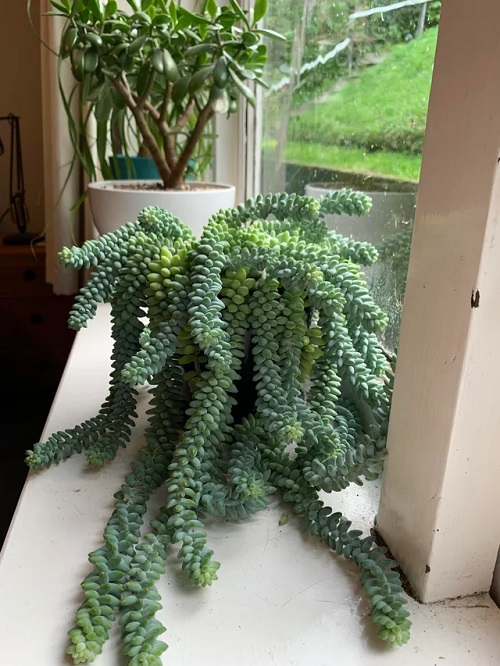
If you want your Burro’s tail to grow bushy and trail freely, keep it far from humidity-heavy spots! Whether indoors or out, the plant prefers a spot with good airflow (yes, bathrooms are a no-go!).
Also, keep it away from drafty windows or air vents. Sudden temperature swings aren’t its best friends!
Note: The Burro’s tail is a tender perennial and has no frost tolerance, so you must bring it indoors as temperatures start to cool. It grows well outdoors in USDA zones 9-11.
5. Choose a Balanced Fertilizer
Fertilizing isn’t a must, but giving your plant a little boost once or twice a year can really help it fill out. Use a balanced liquid houseplant fertilizer diluted to half strength, and feed your Burro’s tail during spring and summer only. Skip the fertilizer during fall and winter.
6. Monitor For Pests
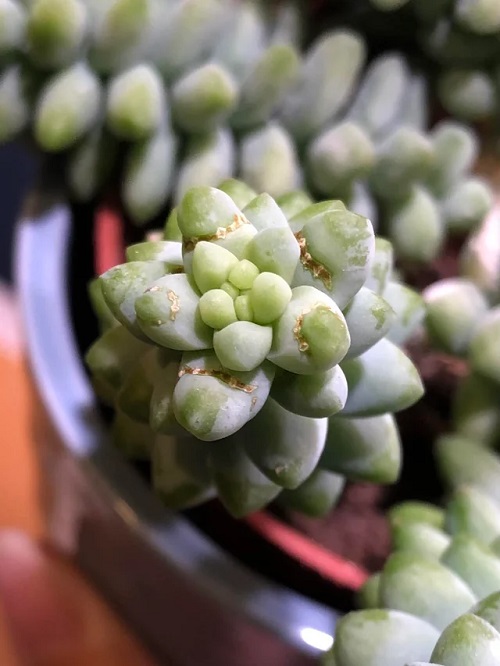
Good news—this Sedum variety is naturally pest-resistant when grown indoors. But if it’s stressed or not doing well, pests might show up. Outdoors, keep an eye out for mealybugs, aphids, scale, or vine weevils.
At the first hint of trouble—like yellowing leaves, movement, or webbing—spray the plant with rubbing alcohol and quarantine it for a week or two. You definitely don’t want unwanted visitors spreading to your other succulents!
7. Prune Off Dead/Diseased Stems
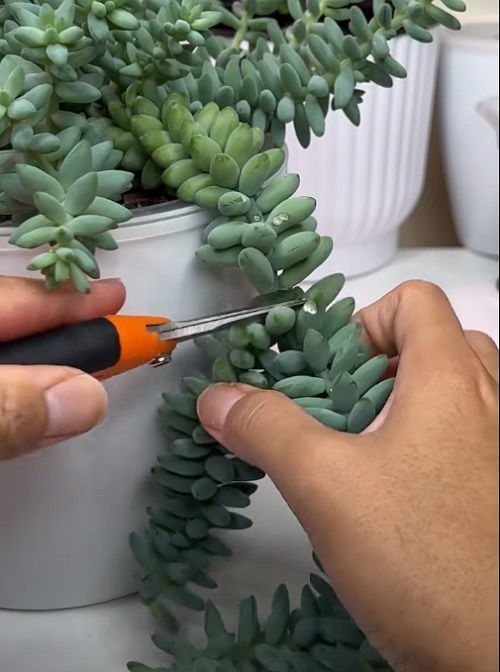
Normally, you would not have to worry about pruning this plant. But since your focus is on getting it look bushier and trail better, snipping off stems can actually help the plant develop branching nodes. So you get a fuller plant with more trailing stems!
The best part is you can prune off dead and diseased stems at any time, unlike other plants, which have particular seasons for pruning.
8. Propagate in the Same Pot
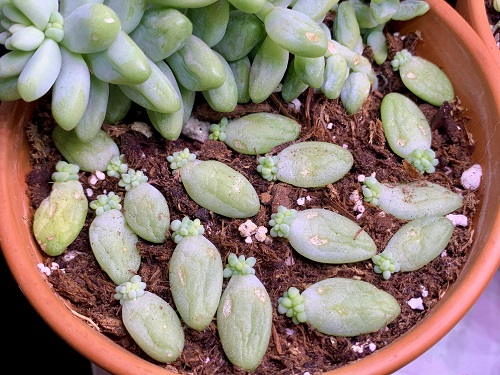
Burro’s tail is notorious for dropping its leaves at the slightest touch—but that’s a blessing in disguise! Those fallen leaves or trimmed stems are perfect for propagation. And since this succulent doesn’t mind a bit of crowding, you can propagate right in the same pot.
You’ll see new baby plants popping up in no time, and your Burro’s tail will start looking fuller naturally.
Note: Stem cuttings grow faster than leaves—so if patience isn’t your thing, go with stem propagation.
9. Repot When Rootbound, But Not Too Often
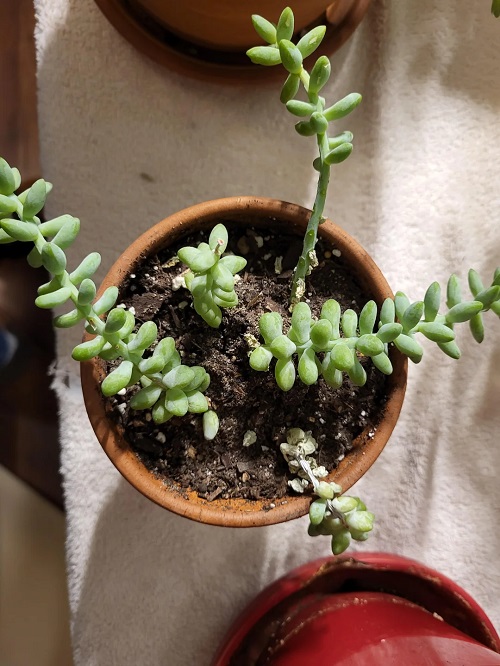
If you’ve had your Burro’s Tail for a while and it suddenly looks like it’s stopped growing, the roots might be cramped. This succulent doesn’t mind being a little snug in its pot, but once it becomes rootbound, its growth slows down.
Repotting it every 2–3 years gives it some legroom to stretch and encourages new stems to sprout—which means a bushier and more beautiful plant!
Make sure to size up the pot only slightly—a huge pot with extra soil can retain moisture for too long and lead to root rot. Choose a shallow, wide pot with good drainage so the plant has space to spread without sitting in soggy soil. After repotting, give it a week or so before watering again to let the roots settle.
When you try out all of these tips and tricks, you are sure to see your burro’s tail look so much bigger and trail beautifully! Do you have any other unique hacks? Share it in the comments below!




